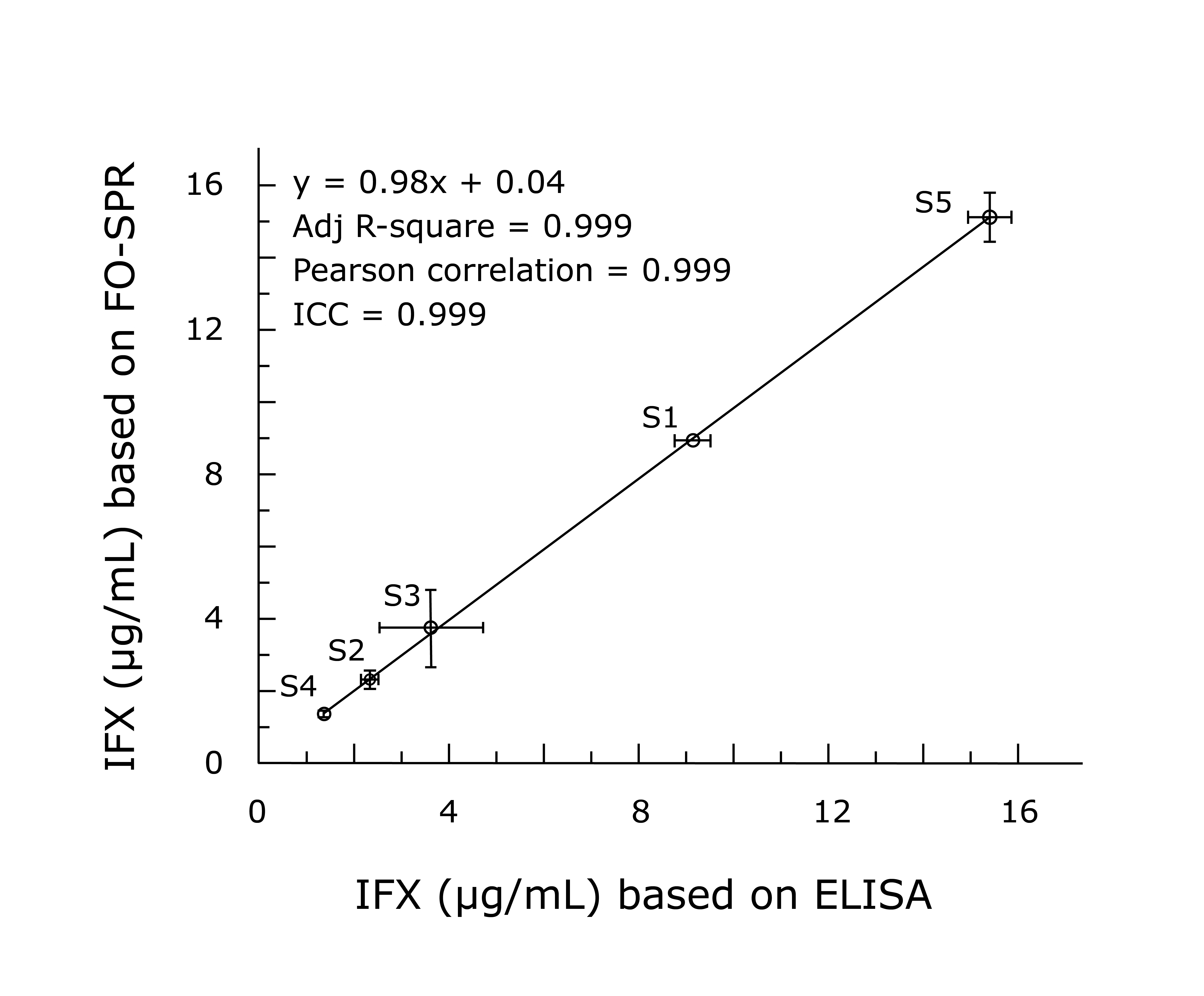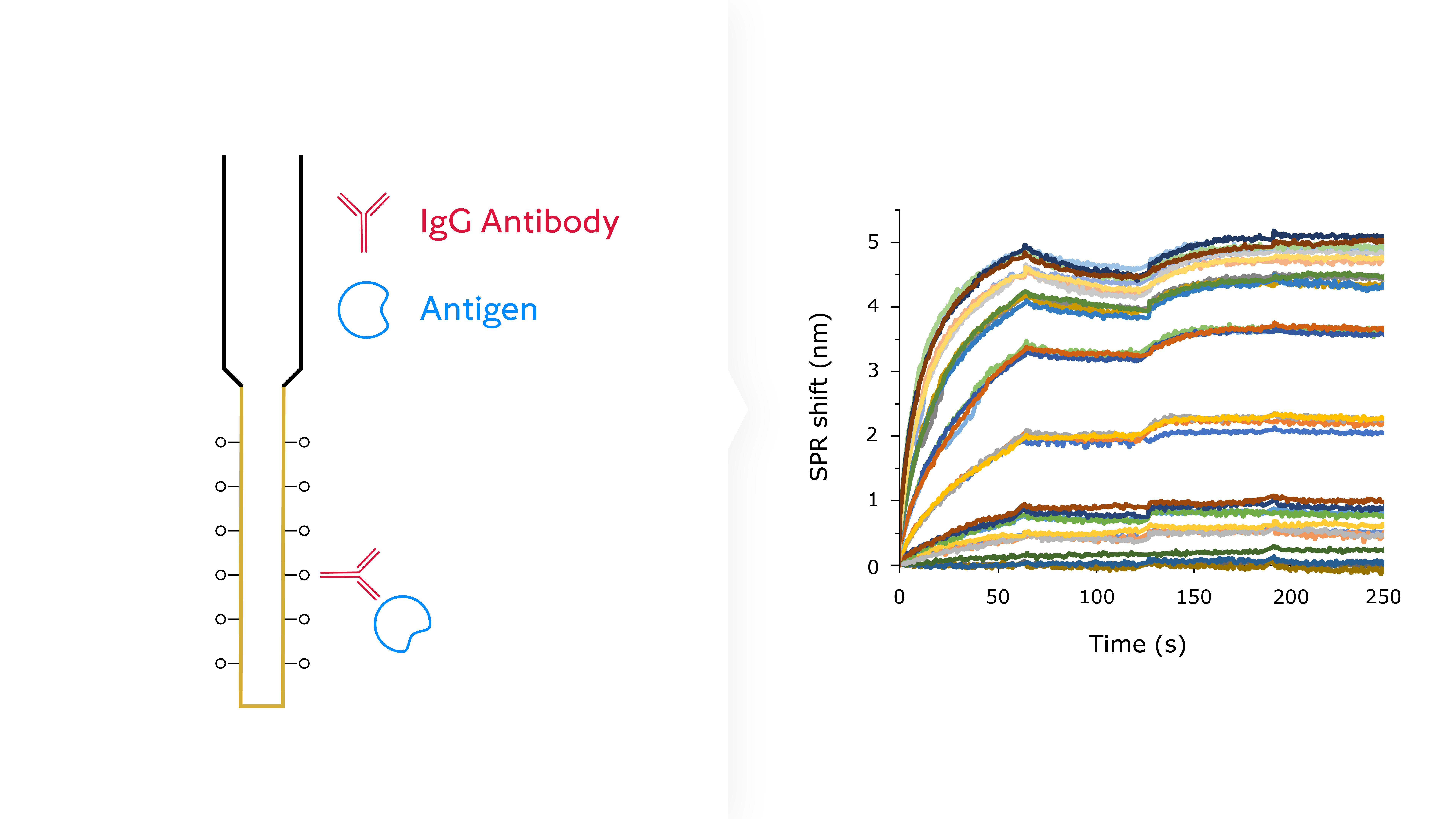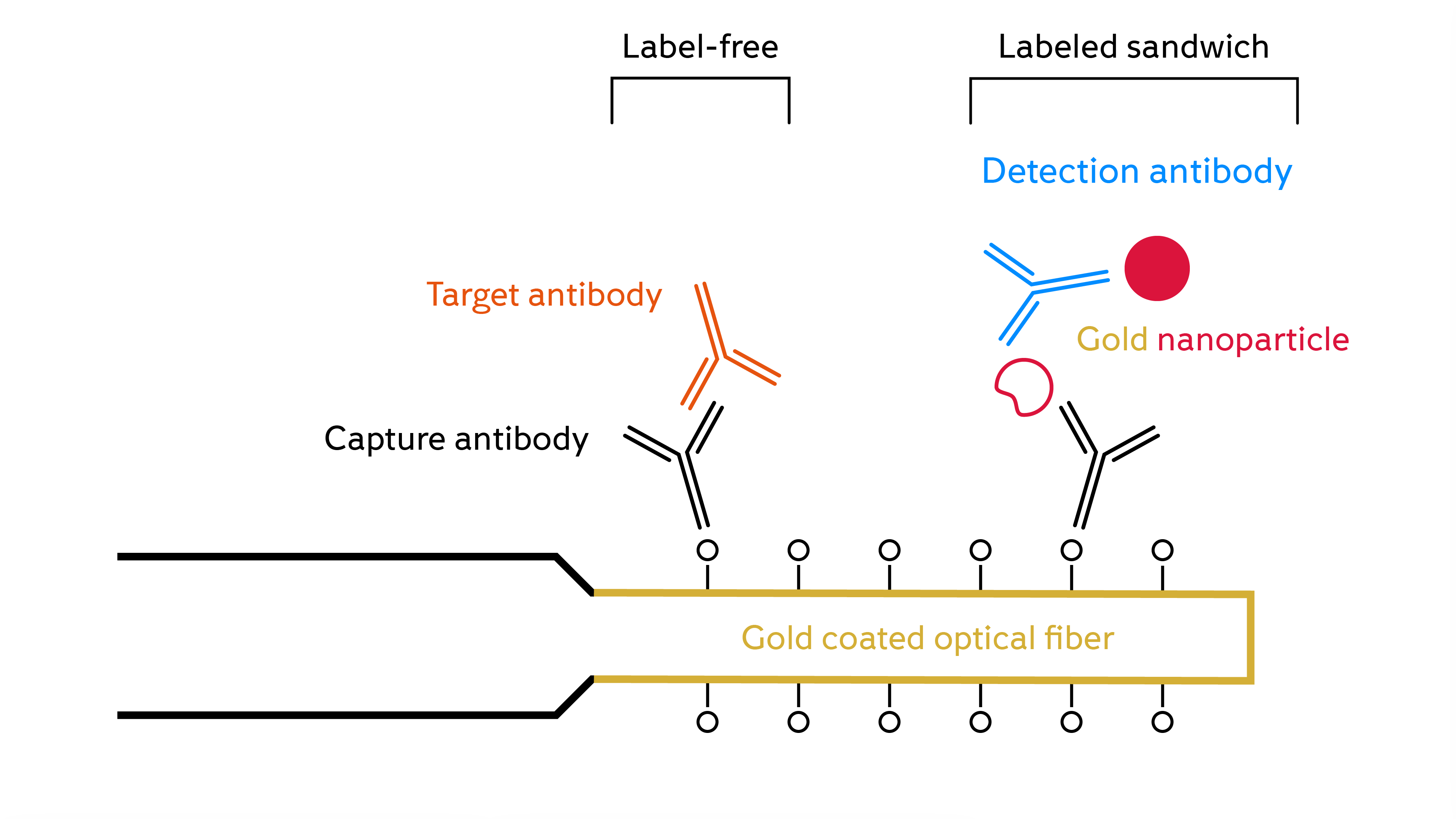Bioassays on FO probe surface. The surface of the gold-coated fiber-optic probe has a carboxyl monolayer to which capture antibodies are covalently bound. Target antibodies bind the capture antibodies in a label-free configuration (left). Alternatively, the signal can be enhanced by using gold nanoparticles functionalized with detection antibodies in a sandwich assay configuration (right) extending detection to the pM and fM range.

The FOx BIOSYSTEMS biosensor can accurately detect, quantify and measure the potency of your antibody of interest in a variety of sample matrices. Label-free pM to µM sensitivities in 10 minutes make our fiber-optic WHITE FOx biosensor a versatile development tool.
- Fast assay time (10 min)
- Clinically relevant sensitivity (0.97 – 80 ng/mL in 100x diluted sample)
- Results better than ELISA, in much less time
- Minimum sample preparation (serum, plasma and whole blood)
Case study:
Therapeutic drug monitoring
Infliximab (IFX) is a monoclonal antibody used for the treatment of inflammatory bowel disease. Optimizing the therapeutic outcome requires concentration measurements which are currently obtained using the slow ELISA or less sensitive lateral flow-based immunotherapy techniques.
Immediate dose adaptation is a challenge using these techniques because they require well-trained staff, a long time to result, and sample prep on serum samples.
FOx BIOSYSTEMS offers an accurate, fast and convenient alternative to currently used techniques. This study showed that the WHITE FOx biosensor provided excellent agreement with ELISA, even for serum and plasma samples.

Antibody concentrations obtained with
WHITE FOx correlate with those obtained with ELISA

Label-free potency screening of antibody–antigen interaction: WHITE FOx can reproducibly measure and rank potency across a library.
Case study:
Potency screening
Quick, label-free quantification of antibodies reveals no information about their functionality, since they could be denatured but still detected. By adding a second step to bind the target of the antibody, the signal relative to the amount of antibody present is a strong indication of its performance. This allows fast and sensitive measurement and ranking of the antigen-binding potency of a set of antibodies.

